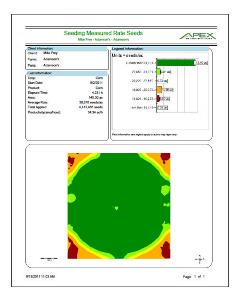Mega Menu
Mega menu is possible in BS5 but we will need to create a custom template layout for the navigation widget. The following is a hard-coded example.

Font Awesome 6
FA6+ icons will work on all widgets.
The FMH Icon box will need a new version created because the styling is broken in Bootstrap 5 templates (this has nothing to do with FA).
FMH Icon Widget
Icons can now be used in Content blocks by pasting the HTML tags from www.fontawesome.com into the HTML editor.
Here are some new icons from Font Awesome 6
face-awesome
envelopes
wheat-awn
Bootstrap Components
Code snippits from http://getbootstrap.com pasted into Content Blocks.
h1. Bootstrap heading
h2. Bootstrap heading
h3. Bootstrap heading
h4. Bootstrap heading
h5. Bootstrap heading
h6. Bootstrap heading
Nav Tabs
Nav Pills
Accordion
.accordion-body, though the transition does limit overflow.
.accordion-body, though the transition does limit overflow.
.accordion-body, though the transition does limit overflow.
Tables
| # | First | Last | Handle |
|---|---|---|---|
| 1 | Mark | Otto | @mdo |
| 2 | Jacob | Thornton | @fat |
| 3 | Larry the Bird | ||
Alerts
Image Carousel
Modals
Sitefinity Widgets
Default, out of the box, Bootstrap 5 templates available for widgets.
The navigation template used above is called Horizontal.
Navigation Widget - Tabs Template
Navigation Widget - Pills Template
Breadcrumb


List Widget - Expandable List Template
Precision Claims FAQs
List Widget - Simple List Template
Crop Claims Reminders
-
How To Report MPCI Claims
-
MPCI Claim Reporting Deadlines
-
Appraisals
-
Production Records by Unit
-
Production Delivered to a Commercial Elevator
-
Production From Precision Farming Technology Systems
-
Production Weighed and Farm Stored
-
Authorization for Load Records, Storage Structure Marking, or Combine Monitor Records
-
Fed Production
-
Quality Adjustment
-
What is a Simplified Claim?
-
What can insureds do to expedite the claim process?
List Widget - Anchor List Template
Quality Control Review FAQ
- What can an Insured do to prepare for a review?
- What can Agents do to prepare for a review?
- How does the review process begin?
Quality Control Review FAQ
What can an Insured do to prepare for a review?
Third party documentation (i.e. summary/settlement sheets from the elevator) is required when applicable and available. Insureds are expected to have available hard copy records that will 1) support the total production raised for the crop/county/year being reviewed and 2) that can demonstrate how production was kept separate between various units, practices and types (if applicable).
Insureds will also want make themselves available to meet with the quality control reviewer as the reviews will need to be completed before the claims can be processed.
What can Agents do to prepare for a review?
How does the review process begin?
Documents List - Documents List Template
Documents List - Documents List Template
| Title | Type | Size | |
| 1053 KB | DownloadECOplus_Brochure_2026_TRIFOLD | ||
| 1107 KB | DownloadSCOplus_Brochure_2026_TRIFOLD | ||
| 491 KB | DownloadFMH MHC Letter Combined | ||
| 0 KB | DownloadGroup 2 Wire - FINAL PDF | ||
| 0 KB | DownloadGroup-Wire-FINAL-PDF-compressed |
News Widget - News List Template
News list template is the only template available by default.
Is the New Margin Coverage Option Right for You?
What is MCO?
- Reduced county yields
- Reduced commodity prices
- Increased prices of certain inputs
- Any combination of these perils
MCO covers a portion of your underlying policy’s deductible similar to other area-based products − but it also combines it with a margin-based loss trigger like Margin Protection (MP).
How is MCO different?
An important consideration for producers considering the switch to MCO is how coverage differs from other products already available, including MP, Enhanced Coverage Option (ECO), or Supplemental Coverage Option (SCO).
MCO is unique with coverage based on a combination of county-level yield data and margin-based triggers – before only offered in separate federal products.
The MCO federal premium subsidy is now offered at the 80% level, the same level as other area-based products: ECO and SCO.
Where is MCO offered and what crops are covered?
MCO is available for corn, cotton, grain sorghum, rice, soybeans, and spring wheat in the following states:
What are important dates for MCO?
The Sales Closing Date (SCD) for most MCO-eligible crops is September 30; for rice, the SCD is either January 31 or February 28 depending on the state and county.
When do policyholders receive loss payments for MCO?
If a loss payment is due, payments are made when final county yields are available, in the summer of the following year – generally June.
How is the MCO margin calculation determined?
When determining the margin calculation for a loss payment, the following inputs are included for most crops, except soybeans, which require fewer inputs.
- Corn | Cotton | Grain Sorghum | Rice | Wheat: Diesel, natural gas (irrigated crops), diammonium phosphate, urea, and potash.
- Soybeans: Diesel, diammonium phosphate, and potash.
Depending on which MCO trigger you select, MCO begins to pay when area margin falls below 90 or 95% of the expected margin.
Interested?
Blog Posts Widget - Blog Posts Lists Template
-
Reporting Acreage with FMH Precision Solutions
Many policyholders already collect precision ag data during planting. Put that data to work to report acreage for crop insurance with FMH Precision Solutions.Full story -
Prepping Your Customers for Planting with Precision
Help your farmers use the precision data they're already collecting to simplify planting and reporting this spring.Full story -
Q&A with an FMH Precision Tech Specialist
Learn how our expert staff supports agents getting started with Precision SolutionsFull story -
Traditional vs. Precision Claims: What Are the Differences?
Oct 16, 2023, 14:01 by Eric RicheLearn how Precision Solutions can lead to simplified claims and easier APH reviews for your customers.Full story -
See How Precision Solutions Saves Premium and Improves APH
See the difference with examples from our recent FieldView™ Partner Connect webinar.Full story



